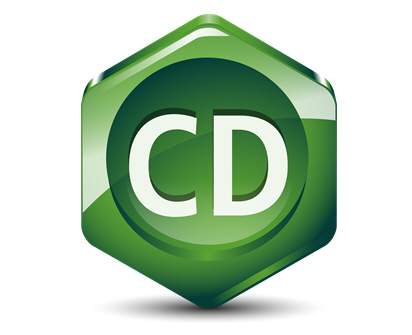The ChemDraw Help menu will open up in through a separate browser interface (internet connection not required).

The ChemDraw software is loaded on all the bookable computers in the UTSC Library.
You will need to download and register before you can use this software for home use. The software license is renewed each October/November. Once you've installed the software look for the green ChemDraw icon since other associated applications (Chem 3D) may also be installed with the ChemOffice Suite if you're on a Windows computer.
If you already have ChemDraw installed and want to reactivate your license for another year, simply open ChemDraw (select Cancel on the pop up window about renewing) and then select "Help" (Windows/PC) OR the ChemDraw icon at top left corner of the window (Apple/Macs) and choose "Activate Chemdraw". Enter the new activation code and select "activate". You can confirm all is good by clicking on the "About Chemdraw" under Help and it should say it is renewed until next October.
Need help locating your new activation code? The activation code is always available under Order History on your Perkin Elmer flexnet account where you downloaded the software.
If you are unable to open Chemdraw for some reason, the easiest thing to do is uninstall it and reinstall the latest copy.
Students: additional details of this software package can often be found in your Quercus course sites.
Detailed ChemDraw help can be located directly within the application by selecting the 'Help' menu at the top right or the User Guide (link posted below).
You can search the Help using the search box or browse through the different options available, such as Contents, Getting Started, Tutorials and ChemDraw Basics.

If you're new to ChemDraw I recommend viewing:
Page Layout (User Guide Chapter 3): Explains the ChemDraw Drawing Area, Document Type, Printing, Saving Page Setup Setting, Slide Boundary Guides, Viewing Drawings
Preferences and Settings (User Guide Chapter 4): Explains Setting Preferences, Customizing Toolbars, Document & Object Settings, Customizing Hotkeys, Document Settings
Shortcuts and Hotkeys (User Guide Chapter 5): Explains Atom Hotkeys, Bond Hotkeys, Generic Hotkeys, Modified Hotkeys, Drawing Reactions Using Hotkeys, Shortcuts, Nicknames
Basic Drawings (User Guide Chapter 6): Explains Bonds, Atoms, Captions, Drawing Rings, Chains, Objects, Clean Up Structure, Checking Structures, Chemical Warnings
ChemDraw includes Search SciFinder-n and Reaxys buttons through it's Add-ins toolbar, enabling you to draw a structure or reaction query in ChemDraw and then instantly send the query to SciFinder-n or Reaxys.
With these tools built into ChemDraw, there’s no need to open a separate browser window or bother with tedious steps of constant cutting and pasting. With a single click, you can access comprehensive and authoritative sources of references, substances and reactions in chemistry and related sciences. Results are displayed immediately in the databases, where you can use their rich set of tools to search, filter, and analyze the information.

University of Toronto Scarborough Library
1265 Military Trail, Toronto, ON M1C 1A4 Canada
Email help
416-287-7500
Map
About web accessibility. Tell us about a web accessibility problem.
About online privacy and data collection.
© University of Toronto. All rights reserved.
